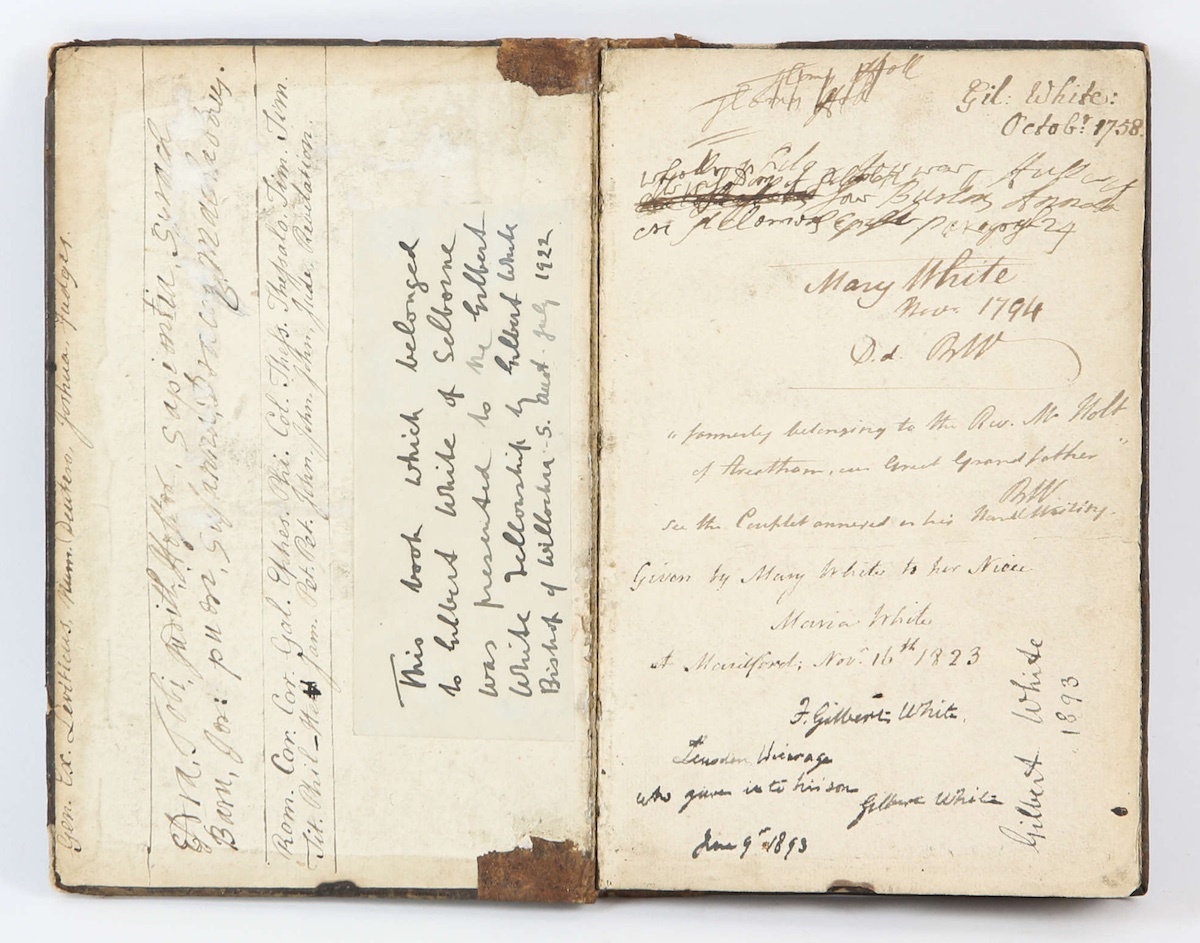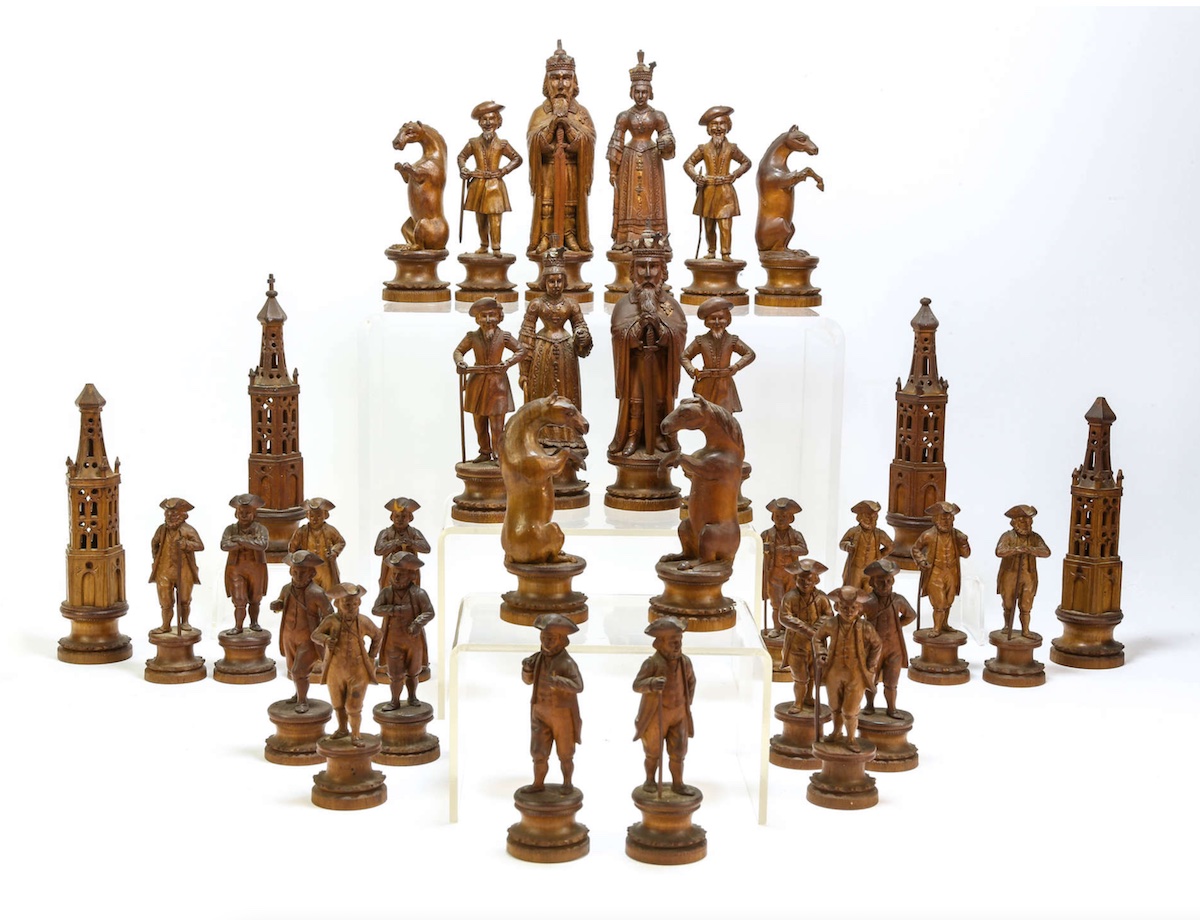Gilbert White ‘Apocrypha’ in Surrey sale
 A personal-signed copy of Gilbert White’s Apocrypha, considered the world’s first ecologist, will go under the hammer in an online sale at Surrey auction house, Ewbank’s, this Friday, with an estimate of £2,000-£3,000.
A personal-signed copy of Gilbert White’s Apocrypha, considered the world’s first ecologist, will go under the hammer in an online sale at Surrey auction house, Ewbank’s, this Friday, with an estimate of £2,000-£3,000.
The book comes complete with the celebrated 18th-century parson-naturalist and ornithologist’s handwritten marginalia and notes.
The book is dated October 1758, when White was 38, and over 30 years before the publication of his best-known, The Natural History and Antiquities of Selbourne, which was published in 1789.
Inscribed on the front flyleaf by members of Gilbert White’s family, the book is bound in contemporary pigskin with later spine and contained within a modern cloth, clamshell box, and further contained within a patterned cardboard box.

The box contains a detailed history of how the book changed hands, with a typescript paper label tipped-in to the inside of the top lid, listing the signatures on the flyleaf, and titled Note of Inscriptions, 18 September, 1922.
A label on the front pastedown written in manuscript reads” This book which belonged to Gilbert White of Selbourne was presented to the Gilbert White Fellowship by Gilbert White Bishop of Willochra, S. Aust. July 1922. The Bishop’s signature is dated 1893 on the lower right corner of the facing flyleaf.
Bishop Gilbert White, born 1859, was the great grand-nephew of Gilbert White the naturalist. He emigrated to Australia where in 1900 he became Bishop of Carpentaria before, in 1915, transferring to the new Willochra Diocese, in South Australia.
Another signature is that of Mary White (nee Yalden) who married Thomas White, one of Gilbert’s younger brothers, with the date 1794 assigned to her imprint. A further long inscription reads: Formerly belonging to the Rev. Mr. Holt, of Stratham, our Great Grandfather, B.W. see the Couplet answered in his handwriting, Given by Mary White to her Niece Maria White at Maidford [Northants] Nov 16, 1823.
A further inscription reads: F. Gilbert White, Leusden Vicarage, who gave it to his son Gilbert White June 9, 1893.
Gilbert White was born on July 18, 1720, in his grandfather’s vicarage at Selbourne, Hampshire. White’s parents were John White (1688-1758), a trained barrister, and Anne Holt (d.1740).
Gilbert was the eldest of eight surviving siblings: Thomas (b.1724), Benjamin (b.1725), Rebecca (b.1726), John (b.1727), Francis (b.1728/29), Anne (b.1731), and Henry (b.1733).
Gilbert’s family lived briefly at Compton, Surrey, before moving into The Wakes in 1728, which was to be his home for the rest of his life. In October 1746 he was ordained a deacon and became curate for his Uncle Charles who was vicar in the neighbouring Hampshire village of Farringdon before his full ordination in 1749. He later became curate of the Selborne parish.
White believed in studying living birds and animals in their natural habitat, an unusual approach at that time, as most naturalists preferred to carry out detailed examinations of dead specimens in the comfort of their studies. Gilbert White now has the reputation of being the first ecologist.
The book was purchased at Christie’s in South Kensington, London, in 1982. The vendor loaned it to the Gilbert White Museum, Selbourne, Hampshire, for exhibition later that year, and the museum returned the book to the vendor in February 1991.

Expected to be the top lot in the sale is a 19th-century South German linden or lime wood chess set, carved and raised on socle bases. A set of striking personality, the Kings wear crowns and hold upturned swords, the Queens appear in Medieval dress, the Knights as rearing horses, the Rooks as medieval turrets, and the Pawns are individually carved and in different positions. The pieces are all large, with the Kings standing 11.5cm tall. The estimate is £3,000-5,000.

